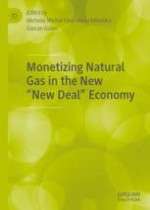
2021 | OriginalPaper | Chapter
1. All Value Chains Begin Upstream
Author : Michelle Michot Foss
Published in: Monetizing Natural Gas in the New “New Deal” Economy
Publisher: Springer International Publishing
Activate our intelligent search to find suitable subject content or patents.
Select sections of text to find matching patents with Artificial Intelligence. powered by
Select sections of text to find additional relevant content using AI-assisted search. powered by